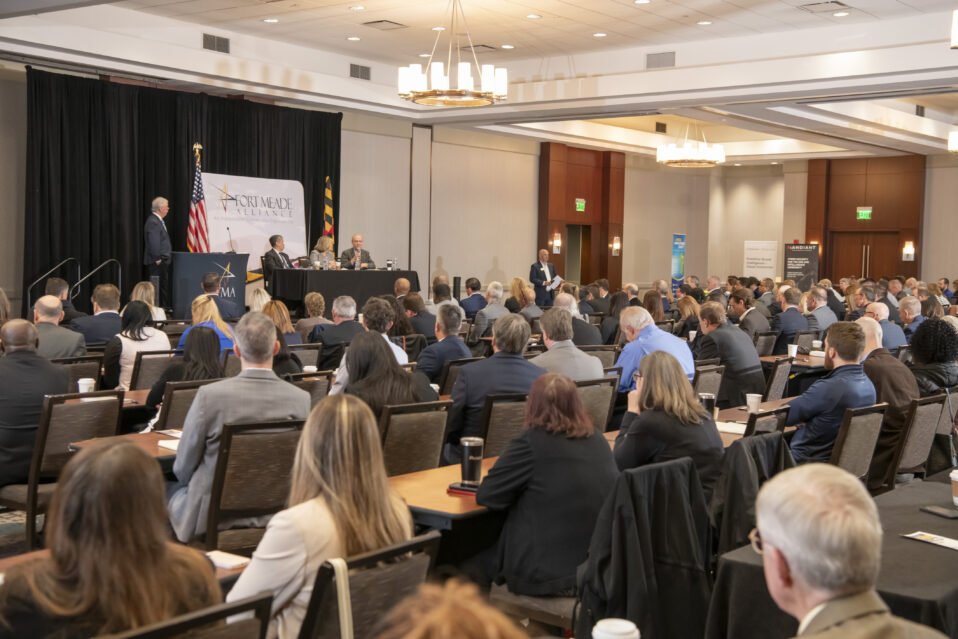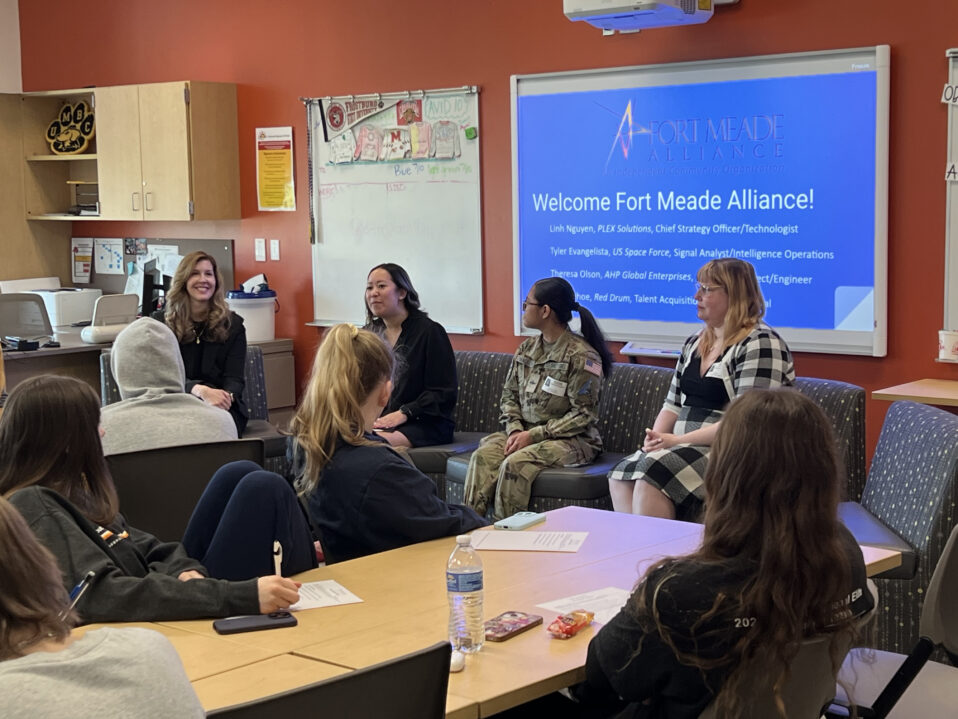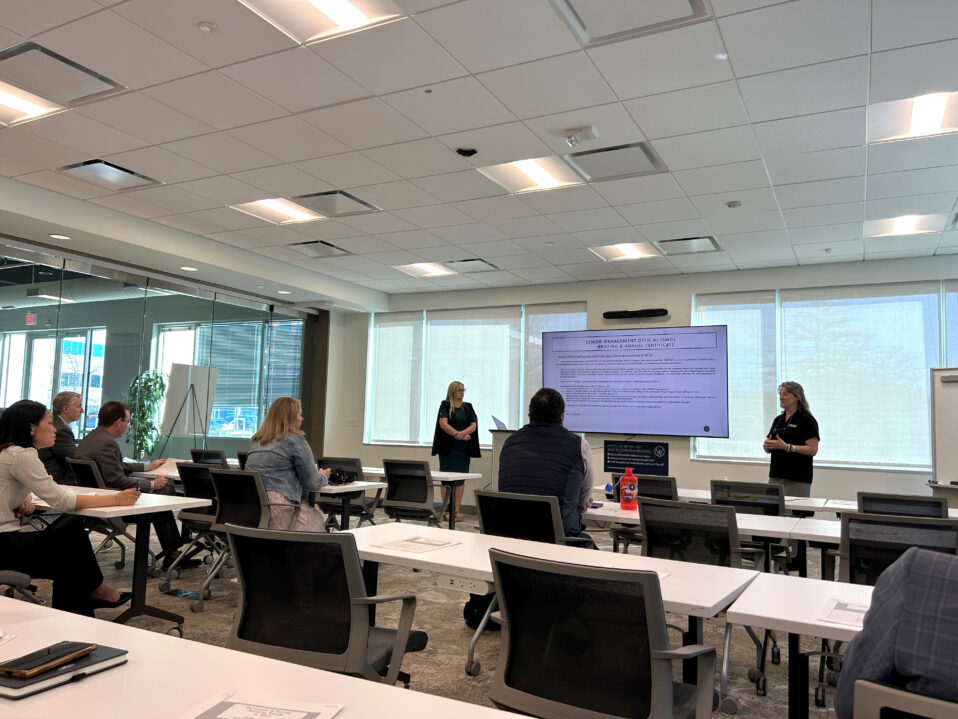New contracting vehicles, a quest for innovation and increasingly busy contracting schedules were key topics of discussion when senior acquisition officials from the National Security Agency, the Defense Information Systems Agency and U.S. Cyber Command spoke at the FMA’s 7th Annual Industry Day.
 Participants in the Government Agency Panel described how new leaders, reorganization efforts, changing budgets and ever evolving mission needs are impacting contracting practices.
Participants in the Government Agency Panel described how new leaders, reorganization efforts, changing budgets and ever evolving mission needs are impacting contracting practices.
Although Cyber Command is still in the process of standing up its acquisition operations, contracting levels have been increasing dramatically.
“In FY17, we awarded one whole contract,” said Stephen Schanberger, Acting Command Acquisition Executive of U.S. Cyber Command. “Last year in FY18, we grew from that one contract at about $900,000 to doing 34 contract actions totaling about $44 million… I believe we will probably hit $60 million this year.”
“This is a big [contracting] year for us,” said Diane Dunshee, NSA Deputy Director of Business Management and Acquisition and Deputy Senior Acquisition Executive. “We have over 50 competitive acquisitions that we will award … [and] we are seeing an uptick in our competition numbers.”

US Cyber Command’s Stephen Schanberger
The appointments of Vice Admiral Nancy Norton as Director of DISA and Dana Deasy as Chief Information Officer for the Department of Defense have impacted acquisition operations at DISA, said Doug Packard, DISA Procurement Services Executive and Chief of the Defense Information Technology Contracting Organization. In particular, new leadership has fostered a culture that emphasizes increased trust with industry partners, transparency in DISA operations and an overall “commercial mindset.”
NSA, DISA and Cyber Command are all working to diversify their contracting vehicles.
“Completion, outcomes-based or fixed price, performance-based activities are a key priority for us,” Dunshee said. “I am happy to say it has become a metric for us… In FY18, we actually increased by 20 percent the amount of outcomes, completion or performance-based by dollar value and we are continuing that trend.”
All three agencies are making greater use of Other Transactional Authorities (OTAs), often to source high-performance computing research, tap innovations from research-and-development shops, or execute “fail fast” pilots while searching for an appropriate service for a mission.

NSA’s Diane Dunshee
Those contracting processes are evolving as acquisition officials try to balance mission partners’ need for advanced and emerging technologies with contractors’ need for specific contract requirements and ways to manage their financial risk.
“Completion contracts are all about balancing risk,” Dunshee said. “How much specificity do we have to provide so that you … can provide a reasonable proposal on how to achieve that outcome and determine cost? That has been a real learning curve.”
NSA has been exploring different ways to provide that specificity, such as “defining how many story points you are going to deliver,” she said. “We have some contracts that were recently awarded that were multi-award IDIQ, but each IDIQ task order will be completion-based… So our customers can define outcomes they want to see at six months, nine months or 12 months.”
NSA, DISA and Cyber Command are supporting other efforts to help funnel innovative technologies and solutions into contracts. NSA is expanding its sharing of data and research in certain areas with companies, so that we can cooperatively advance technology,” Dunshee said.
Packard urged attendees at Industry Day to contact DISA’s Emerging Technologies Office whose staff is focused on bringing new technologies into agency operations. DISA is also pursuing innovative advances within several functions, including end-point security modernization, multi-factor authentication, cloud migration, machine learning and artificial intelligence.
Cyber Command has established the Directorate of Future Capabilities. Directorate staff are trained to talk with companies about their innovations and determine if those technologies might fit with upcoming contracts.

DISA’s Doug Packard
In addition, “we will post our top 10 challenges for everybody to see: the things we are trying to get at in the next few years and the things that are the hard problems that we really want to focus on,” Schanberger said.
Acknowledging that changing contract vehicles and the search for innovation can complicate some competitions, speakers urged companies to provide feedback on draft RFPs.
“We are pushing our contracting officers to get draft packages out so you can read them,” Dunshee said. “If you think we are way off the mark or we didn’t allow room for innovation or you just don’t understand what we wrote, that’s all fair comment and we want to hear that before we finalize documents and put the RFP on the street.”
Contractor feedback on draft documents can provide other benefits to both federal agencies and the contracting community, Packard said. It makes agencies aware of emerging technologies that should be considered within RFPs and it can also alert agencies to opportunities to do HUB Zone and Small Business set-asides within contracts.



